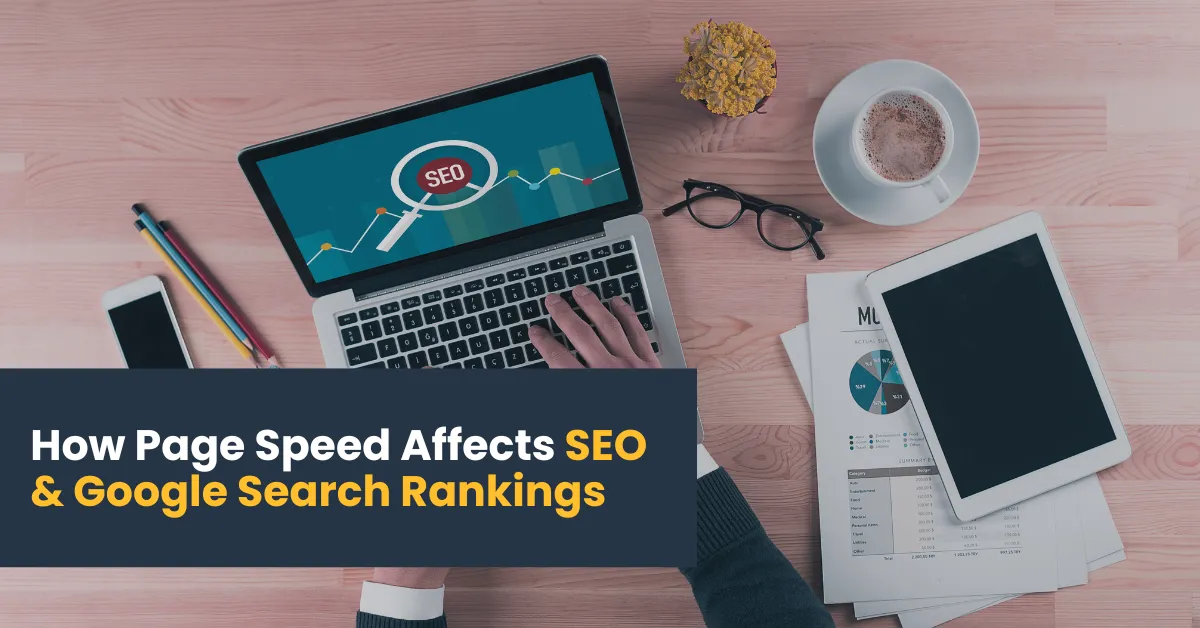Sales & News on Autopilot:
Stay ahead of the curve with automated blogs delivering the latest sales strategies and industry trends.
About Us
We Specialize
in Reviews & Messaging For Local Business
CHATT's goal is to help small businesses engage with their customer's quicker & easier to improve overall customer experience to help everyone grow.

How Page Speed Affects SEO & Google Search Rankings
“SEO is like a resume, you polish it so you have your best foot forward.” - Matt Cutts
The Critical Role of Page Speed in SEO and Google Rankings
Introduction to Page Speed and SEO
Did you know that a one-second delay in page load time can lead to a 7% reduction in conversions? Page speed is a critical factor in user experience, directly influencing how users interact with a website. In the realm of SEO, page speed is equally important, as it significantly impacts how search engines, particularly Google, rank websites. This blog aims to explore how page speed affects SEO and Google rankings, providing insights into why it should be a top priority for website optimization.
Understanding Page Speed

Page speed refers to the time it takes for a webpage to fully load and become interactive for users. It encompasses several components, including load time, time to first byte (TTFB), and interactivity. Load time is the duration from the moment a user requests a page until it is fully displayed in the browser. Interactivity refers to the time it takes for a user to interact with the page, such as clicking buttons or filling out forms.
Several tools can measure page speed, providing detailed reports on various metrics. Google PageSpeed Insights, GTmetrix, and Lighthouse are some of the most popular tools. These tools analyze page performance and offer recommendations for improvements, making it easier for webmasters to optimize their sites.
Impact on User Experience
Page speed significantly affects user engagement and bounce rates. A slow-loading website can frustrate users, leading them to abandon the site and look for alternatives. Studies have shown that 53% of mobile users leave a site that takes longer than three seconds to load. This negative user experience can result in higher bounce rates, lower engagement, and ultimately, fewer conversions.
For instance, an e-commerce site with poor page speed may lose potential customers who are unwilling to wait for the page to load. This can lead to a direct loss in revenue and negatively impact the site's reputation. Conversely, a fast-loading site enhances user experience, encouraging visitors to stay longer, explore more pages, and complete desired actions, such as making a purchase or filling out a contact form.
Google’s Algorithm and Page Speed

Google has long recognized the importance of page speed as a critical ranking factor. In 2010, Google announced that page speed would be included in its ranking algorithms for desktop searches. This focus was extended to mobile searches in 2018, underscoring the growing importance of mobile user experience.
Core Web Vitals are a set of metrics introduced by Google to measure user experience on the web, with a significant emphasis on page speed. These metrics include Largest Contentful Paint (LCP), First Input Delay (FID), and Cumulative Layout Shift (CLS). LCP measures loading performance, FID assesses interactivity, and CLS evaluates visual stability. Together, these metrics help determine how quickly users can interact with a page and how stable the page is during loading.
Several case studies highlight the impact of optimizing page speed on Google rankings. For example, e-commerce giant Walmart reported a 2% increase in conversions for every one-second improvement in page load time. Similarly, Pinterest achieved a 15% increase in SEO traffic by reducing wait times.
Techniques to Improve Page Speed

Improving page speed requires a multifaceted approach, targeting various aspects of a website's performance. One effective technique is optimizing images. This involves compressing images to reduce their file size without compromising quality, choosing appropriate formats (e.g., JPEG for photos, PNG for graphics with transparency), and using modern formats like WebP for better compression.
Minimizing code, including HTML, CSS, and JavaScript, is another crucial step. Removing unnecessary code, minifying files, and using asynchronous loading for scripts can significantly reduce load times. Leveraging browser caching and content delivery networks (CDNs) can also enhance page speed. Browser caching stores static files locally on users' devices, reducing the need to reload them on subsequent visits. CDNs distribute content across multiple servers worldwide, ensuring faster delivery by reducing the physical distance between the server and the user.
Mobile optimization is equally important, given the increasing number of users accessing websites via mobile devices. Techniques such as responsive design, optimizing images for mobile, and using AMP (Accelerated Mobile Pages) can improve mobile page speed and enhance user experience.
Tools to Enhance Page Speed

Several tools can help diagnose and fix page speed issues. Google PageSpeed Insights provides a comprehensive analysis of page performance, offering specific recommendations for improvement. GTmetrix combines data from Google PageSpeed Insights and YSlow to provide detailed reports on page speed and performance. Lighthouse, an open-source tool from Google, audits page performance, accessibility, and SEO, offering actionable insights for optimization.
Using these tools, webmasters can identify issues affecting page speed, such as large image files, unoptimized code, or poor server performance. By addressing these issues, they can significantly improve page load times and overall site performance.
Benefits of Improved Page Speed
Enhancing page speed offers numerous benefits beyond improved SEO performance and higher Google rankings. A faster website provides a better user experience, leading to increased engagement, lower bounce rates, and higher conversion rates. Users are more likely to stay on a site that loads quickly, explore its content, and complete desired actions, such as making a purchase or filling out a form.
From an SEO perspective, a fast-loading site is more likely to rank higher in search results, attracting more organic traffic. Improved page speed also contributes to better overall website performance, enhancing its reputation and credibility among users.
For businesses looking to automate their marketing tasks and improve their online presence, tools like Easy Automated Sales can be invaluable. Easy Automated Sales offers a comprehensive suite of features designed to streamline marketing efforts, including SEO optimization and performance tracking, ensuring that your website not only loads quickly but also ranks highly in search results.
Conclusion
Page speed is a critical factor in SEO and Google rankings, directly influencing user experience and search engine performance. By understanding the importance of page speed and implementing techniques to optimize it, webmasters can enhance their site's performance, attract more organic traffic, and achieve higher rankings in search results. Prioritizing page speed in your website optimization strategies is essential for staying competitive in the digital landscape. Test your website’s page speed today using tools like Google PageSpeed Insights and GTmetrix, and take steps to improve it for better SEO performance and user satisfaction.
Frequently Asked Questions About SEO and Google Ranking
1. What is SEO?
SEO (Search Engine Optimization) is the practice of optimizing your website to improve its visibility on search engines like Google. It involves various strategies to increase your website's ranking in search results for relevant keywords.
2. How does Google ranking work?
Google ranking is determined by a complex algorithm that considers various ranking factors. These factors include keyword relevance, quality of content, backlinks, and user engagement.
3. What are some important ranking factors in SEO?
Some important SEO ranking factors include on-page SEO optimization, search intent alignment, keyword research, and providing quality content that meets user queries.
4. How can I improve my SEO ranking on Google?
To improve your SEO ranking on Google, focus on creating high-quality, relevant content, optimizing your website for keywords, obtaining backlinks from reputable sites, and ensuring a positive user experience.
5. What is keyword stuffing and why is it harmful for SEO?
Keyword stuffing is the practice of excessively using keywords in content to manipulate search engines. This practice is harmful for SEO as search engines penalize websites for unnatural keyword usage.
6. What is the significance of local search in SEO?
Local search is crucial for businesses targeting a specific geographic area. Optimizing for local search involves creating Google My Business listings, obtaining local citations, and ensuring accurate business information across online directories.
7. How does technical SEO impact Google ranking?
Technical SEO involves optimizing website infrastructure and backend elements to enhance search engine results. Elements like site speed, mobile-friendliness, and URL structure can significantly impact your ranking.
Start growing with Easy Automated Sales today!

Copyright EASY AUTOMATED SALES 2025 -- All Rights Reserved
We’re on a mission to build a better future where technology creates good jobs for everyone.
